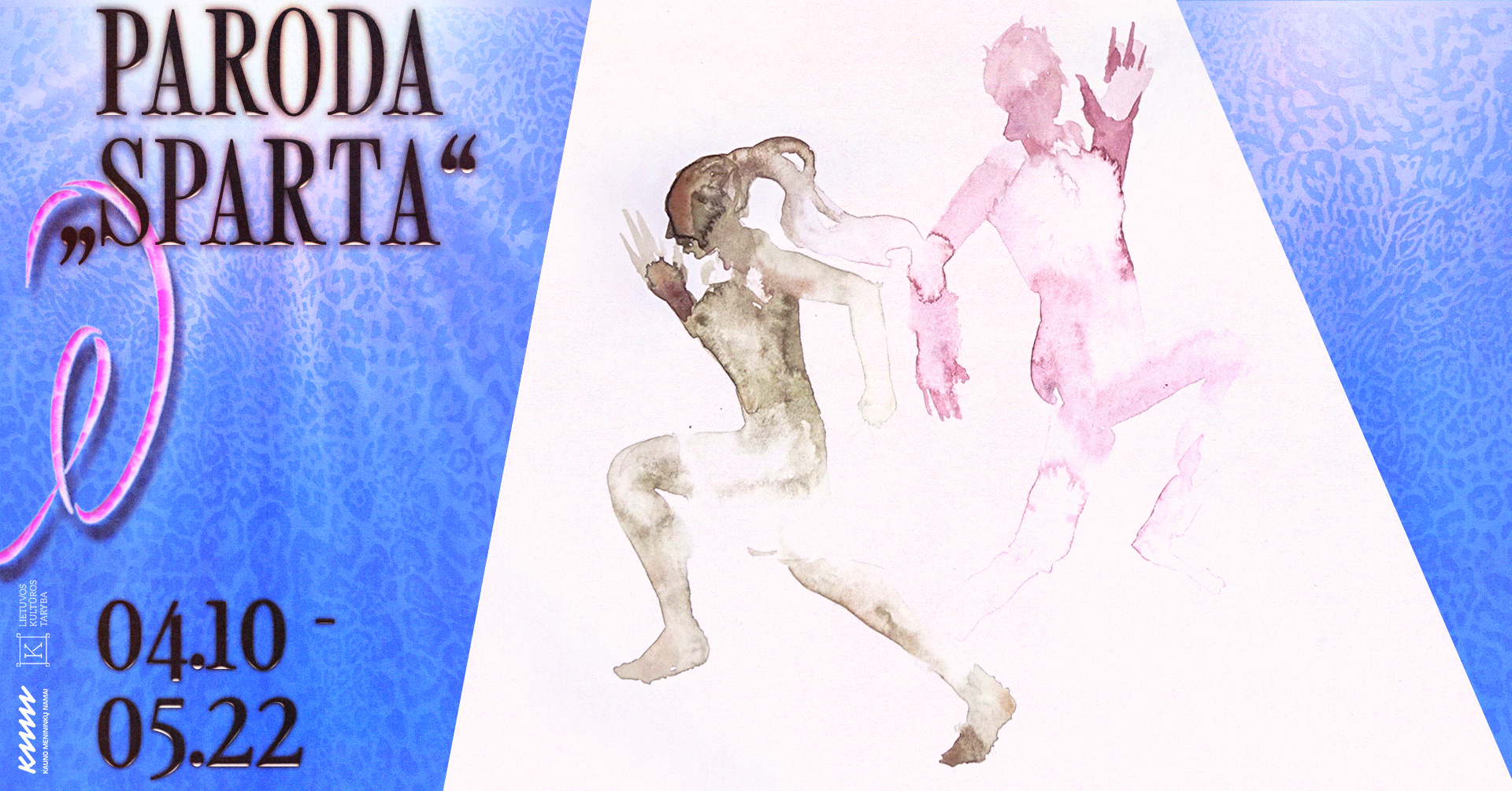
Obscene West. BMW ▞ Opening of „Sparta“ exhibition
Kaunas Artists House presents the third part of “Obscene West” - BMW. On the 10th of April at 6 pm, we will open the first the group exhibition “Sparta” in the programme, in the Kaunas Artists' House Gallery space. The participating artists are Anna Orbaczewska, Adomas Danusevičius, and Augustė Vickūnaitė.
████████████████████
Lycurgus made it clear that happiness was the reward of the brave, misery the reward of cowards. For whenever someone proves a coward in other cities, he has only the bad reputation of being a coward, but the coward goes to the same public places as the brave and takes his seat and joins in physical exercise, as he likes. But in Sparta, everyone would be ashamed to accept a coward as a messmate or as an opponent in a wrestling match. Frequently such a man is not picked when they select teams for ball games, and in choruses, he is relegated to the most ignominious positions.
𝑋𝑒𝑛. 𝐿𝑎𝑐. 9.3–5, 𝑐𝑓. 𝑁𝑖𝑐𝑜𝑙𝑎𝑢𝑠 𝑜𝑓 𝐷𝑎𝑚𝑎𝑠𝑐𝑢𝑠 𝐹𝐺𝑟𝐻 90 𝐹103 𝑍144.12
████████████████████
The ritualistic nature of many Spartan competitions, both political and sporting, served as a performative ideological tool. Ritualised practices provide symbolic meanings that easily translate into belief systems that help to legitimise the group and its activities.
The numerous men's competitions in Sparta can be seen as a means of social control, aimed at publicly practising the ideals of masculine excellence. Failure to comply with them was punishable by disenfranchisement.
The exhibition “Sparta” is about cowards as losers, their forms of representation, and fragility. What does it mean to be a coward, a loser with nothing to lose? What does a defeated body look like? Abstract, fragmented, strange, cartoonish, feminine? What would a soundtrack of losers sound like? Gloomy, jerky, creepy, or maybe Soviet? How many words and names do we have to describe the loser, and what are the emojis of defeat?
◤◢◣◥◤◢◣◥◤◢◣◥◤◢◣◥◤◢◣◥
This year’s third part of the project “Obscene West. BMW” explores aspects of masculinity in 1990s Lithuania, examining their impact and the challenges that society has faced—and continues to face—today. Drawing on Tereškinas' 2004 study, Men, Forms of Masculinity, and the Politics of Masculinism in Contemporary Lithuania, as well as the 2025 project Obscene West. BMW programme, we will focus on themes such as abstraction, hierarchy, and the body in relation to masculinity.
The BMW reference in the project’s title is inspired by Black Market Worlds, the Baltic Triennial curated by Raimundas Malašauskas at the Contemporary Art Centre (CAC) in Vilnius in 2005. It also alludes to the BMW brand as a longstanding symbol of prestigious masculinity, a meaning that remains relevant today.
Exhibition curator: Agnė Bagdžiūnaitė
Architect: Gabrielė Černiavskaja
Technician: Laura Skučaitė
Visual communicator of the project: Kornelija Zizaitė
The project “Obscene West. BMW” is funded by Lithuanian Council for Culture.
More information about the project: https://kmn.lt/projects/obscene-west
